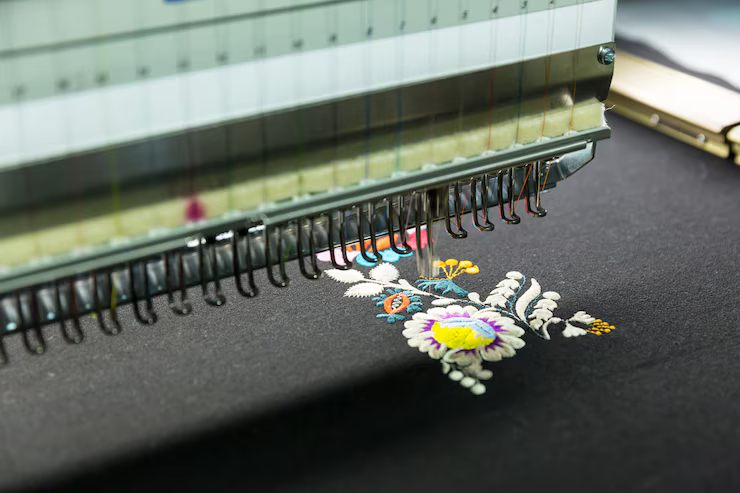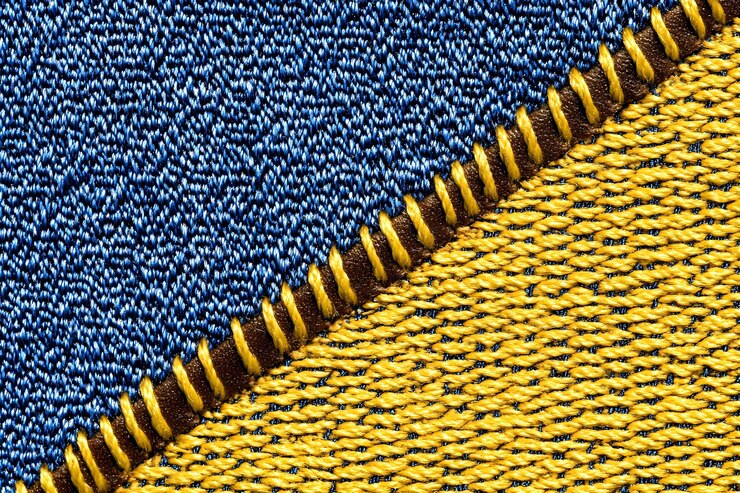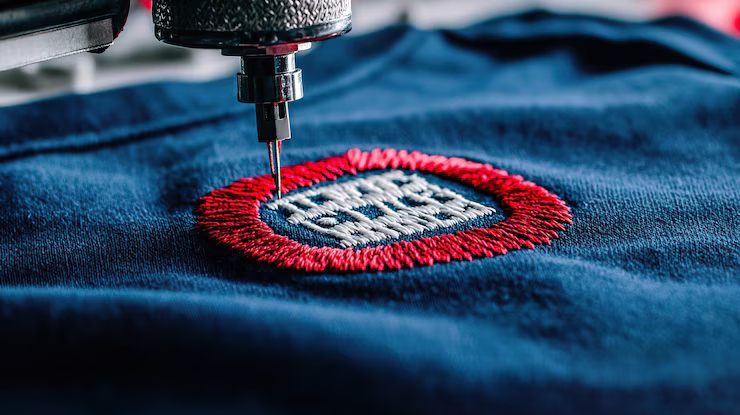Top Fabric Choices for Chain Stitch Patches and How USA Digitizers Prepare Files Accordingly

Strong 8k brings an ultra-HD IPTV experience to your living room and your pocket.
Creating beautiful and durable chain stitch patches requires more than just great design and colorful threads. One of the most important—but often overlooked—factors is the fabric. The type of fabric used for a patch affects everything from how the thread lays to how the patch holds up over time.
Whether you're creating custom chain stitch patches for fashion, branding, or merchandise, choosing the right fabric is essential. And just as important is working with professional digitizing services USA that understand how to adjust stitch files for different materials. Let’s explore the best fabrics for chain stitch embroidery—and how skilled U.S. digitizers adapt each file for flawless results.
Why Fabric Choice Matters in Chain Stitch Embroidery
Fabric isn’t just a background for embroidery—it’s the foundation. Chain stitch embroidery involves looped threads that can shift, stretch, or bunch up depending on the fabric. If the wrong fabric is used, or if the stitch file isn’t adjusted for it, the final patch can turn out warped, fuzzy, or misaligned.
That’s why experienced digitizing services in USA always ask what fabric you're using before they start digitizing. It allows them to modify:
Stitch density and length
Pull compensation (adjusting for fabric stretch or tension)
Underlay stitching (foundation stitching under the top layer)
Thread type and needle recommendations
Different fabrics behave differently under the needle—and the digitized file must reflect that.
Top 5 Fabric Choices for Chain Stitch Patches
Here are the most popular and effective fabrics used in custom chain stitch patches, along with tips on how digitizers prepare files for each.
1. Felt – The Classic Choice
Felt is one of the most popular base fabrics for chain stitch patches. It’s thick, sturdy, and doesn’t fray, making it perfect for detailed stitching and long-lasting results. Its soft texture also adds to the patch’s vintage appeal.
Why it’s ideal:
Holds stitches well without puckering
No need to hem or seal edges
Retro look that matches the aesthetic of chain stitch
How digitizers prepare:
Digitizing services USA will often reduce underlay on felt because it provides natural support. They’ll also ensure longer stitch lengths to avoid overworking the dense fabric.
2. Twill – Durable and Versatile
Twill is another common fabric for patches, known for its diagonal weave and strength. It’s widely used for varsity patches, workwear, and team uniforms.
Why it’s ideal:
Clean, professional appearance
Strong enough for frequent wear and washing
Easy to edge-finish with merrow or embroidery
How digitizers prepare:
For twill, digitizers often apply a light underlay to stabilize the fabric. They carefully balance the stitch density to prevent the twill weave from showing through the embroidery.
3. Denim – Fashion-Forward and Tough
Denim is a stylish option for custom patches, especially in streetwear and modern fashion. Its rugged texture adds depth to chain stitch designs.
Why it’s ideal:
Thick and supportive
Adds a bold, urban aesthetic
Works great with oversized patches
How digitizers prepare:
Digitizing services in USA usually apply a denser underlay on denim to help the stitches sit evenly. They may recommend a slower stitch speed during production to avoid needle breaks due to the fabric’s thickness.
4. Canvas – Rugged and Workwear-Approved
Canvas is similar to denim but even more durable, often used in outdoor gear, backpacks, or heavy-duty work uniforms.
Why it’s ideal:
Holds large patches without warping
Matches tough, utility-style branding
Withstands stress and weather exposure
How digitizers prepare:
USA digitizers increase pull compensation on canvas to prevent thread distortion. They also recommend strong backing material and reinforced borders to ensure the patch maintains shape and placement.
5. Wool – Classic and Cozy
Wool fabric (or wool blends) is great for traditional varsity and school patches. It’s warm, textured, and nostalgic—making it a perfect match for chain stitch aesthetics.
Why it’s ideal:
Soft and textured for a vintage look
Matches retro fashion and team apparel
Pairs well with felt or chenille layers
How digitizers prepare:
Digitizers reduce stitch tension on wool to avoid sinking into the fabric. They may use looser underlay stitching and advise on wool-compatible threads to reduce fuzz and fray.
How USA Digitizing Services Tailor Files to Fabric
Top-tier digitizing services USA don’t use one-size-fits-all templates. Instead, they ask questions like:
What fabric will the patch be stitched on?
What’s the final patch size?
What type of thread will you use (cotton, rayon, polyester)?
Will the patch be used outdoors, on clothing, or as decoration?
Based on your answers, they adjust every setting in the digitized file to match the material. Here's how:
🧵 Stitch Density
Too high a density can make thick fabrics buckle or cause thread breaks. Too low, and the fabric might show through. USA digitizers strike the right balance depending on material weight.
🧷 Underlay Stitch Type
This hidden layer of stitching stabilizes the fabric and sets up the top layer. Felt may need minimal underlay, while denim or canvas requires extra support.
📐 Pull Compensation
Some fabrics stretch slightly during stitching. Digitizers apply pull compensation to ensure the final stitch ends up in the right place—especially important for text and outlines.
🪡 Stitch Path and Length
Looped chain stitches can behave differently on each material. U.S. digitizers often manually plan the path and set ideal loop lengths so your design flows correctly.
Bonus: Backing and Finishing Advice
Besides embroidery file prep, expert digitizing services in USA can also advise you on finishing:
Iron-on or adhesive backings for casual use
Velcro backings for tactical or removable patches
Sew-on for permanent, heavy-use apparel
Merrowed edges for a clean border on thick fabrics
This support makes sure your patch performs well and looks professional in any setting.
Final Thoughts
The journey of a patch doesn’t end with design and thread—it begins with fabric. Choosing the right base and partnering with skilled digitizing services USA ensures your custom chain stitch patches look great, last long, and stitch cleanly.
Whether you're working with felt, twill, denim, canvas, or wool, your patch deserves a digitized file tailored specifically to that fabric. That’s what separates average embroidery from professional-grade results.
So, before your next patch project begins, ask yourself: Is your fabric right for chain stitch? And is your digitizing service ready to handle it with precision? If you’re working with U.S.-based pros, the answer is yes—and your patch will show it.
Note: IndiBlogHub features both user-submitted and editorial content. We do not verify third-party contributions. Read our Disclaimer and Privacy Policyfor details.




